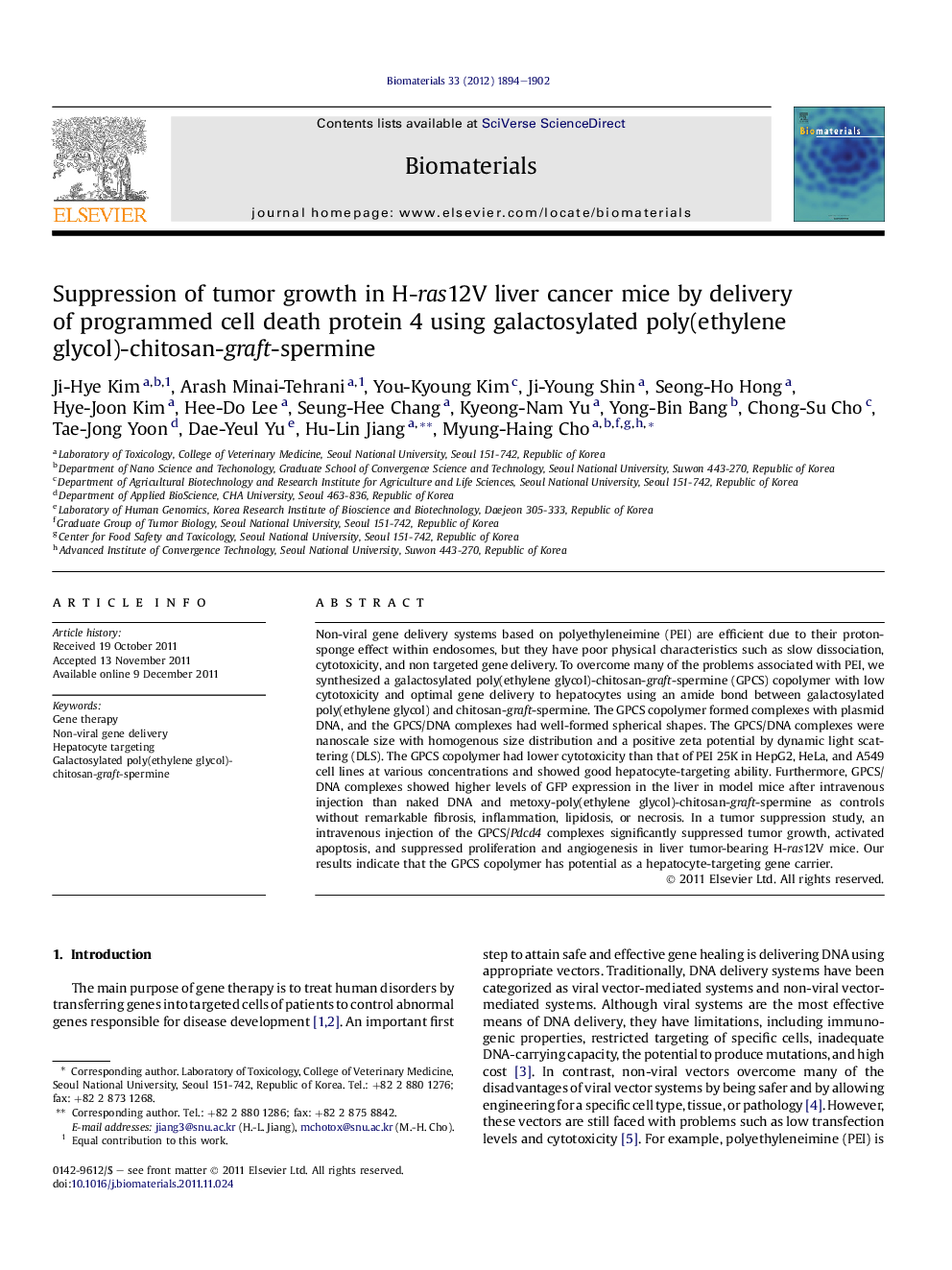| Article ID | Journal | Published Year | Pages | File Type |
|---|---|---|---|---|
| 7172 | Biomaterials | 2012 | 9 Pages |
Non-viral gene delivery systems based on polyethyleneimine (PEI) are efficient due to their proton-sponge effect within endosomes, but they have poor physical characteristics such as slow dissociation, cytotoxicity, and non targeted gene delivery. To overcome many of the problems associated with PEI, we synthesized a galactosylated poly(ethylene glycol)-chitosan-graft-spermine (GPCS) copolymer with low cytotoxicity and optimal gene delivery to hepatocytes using an amide bond between galactosylated poly(ethylene glycol) and chitosan-graft-spermine. The GPCS copolymer formed complexes with plasmid DNA, and the GPCS/DNA complexes had well-formed spherical shapes. The GPCS/DNA complexes were nanoscale size with homogenous size distribution and a positive zeta potential by dynamic light scattering (DLS). The GPCS copolymer had lower cytotoxicity than that of PEI 25K in HepG2, HeLa, and A549 cell lines at various concentrations and showed good hepatocyte-targeting ability. Furthermore, GPCS/DNA complexes showed higher levels of GFP expression in the liver in model mice after intravenous injection than naked DNA and metoxy-poly(ethylene glycol)-chitosan-graft-spermine as controls without remarkable fibrosis, inflammation, lipidosis, or necrosis. In a tumor suppression study, an intravenous injection of the GPCS/Pdcd4 complexes significantly suppressed tumor growth, activated apoptosis, and suppressed proliferation and angiogenesis in liver tumor-bearing H-ras12V mice. Our results indicate that the GPCS copolymer has potential as a hepatocyte-targeting gene carrier.
